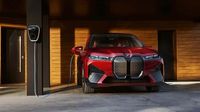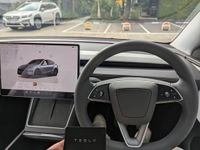Charging installation giant Qmerit has reported a remarkable surge in home charger installations, marking the first quarter of 2025 as the best in the company's nine-year history. This milestone reflects a significant increase of 57% compared to the final quarter of 2024, indicating a growing trend among electric vehicle (EV) owners towards home charging solutions.
According to Qmerit's Chief Operating Officer, Oliver Phillips, the rise in installations is largely attributed to customers increasingly opting for home plugs as part of their EV purchase experience. "Once they experience the convenience of home charging, of waking up every morning with a fully charged vehicle, then that sows the seeds for more acceptance," Phillips noted in an email to InsideEVs.
While Qmerit did not disclose the exact number of installations performed in the first quarter, the company emphasized that the growth is not confined to traditionally electric vehicle-friendly states. "Our numbers not only signal that EVs can grow, but that they can cross geographic and ideological boundaries," Phillips asserted, suggesting that the shift towards home-based charging solutions is gaining traction across diverse regions.
Qmerit is part of a burgeoning field of companies that provide full-service EV charger installations, which include home assessments, permitting, and the actual installation work. This process can be complex, especially when electrical modifications are required, but the demand is clear. The increasing number of automakers recognizing the importance of facilitating home charging has played a crucial role in this trend.
For many years, automakers were focused solely on producing electric vehicles, leaving the charging infrastructure to other companies. However, as the market evolves, manufacturers are beginning to understand that providing a seamless charging experience is essential. Several major players, including General Motors, Honda, Ford, and Hyundai, now offer home chargers or installation assistance as part of the vehicle purchase process. Some even partner directly with Qmerit to streamline this service.
In recent years, many EV drivers have relied on public fast-charging stations, often treating them as replacements for traditional gas stations. However, this has led to long lines and increased wait times at these charging locations. The current trend, as noted by Phillips, is a shift back to prioritizing home chargers, which are generally more convenient and cost-effective for those with access to a garage and electrical panel.
"The power of partnerships is reflected in these numbers," Phillips said, highlighting how collaborative efforts with automakers and dealers are reducing barriers to acquiring home charging solutions. By making home charging a more integrated and affordable part of the car-buying experience, the industry is poised for continued growth.
As the demand for electric vehicles surges, so too does the need for reliable and accessible charging options. The increasing popularity of home charging solutions is a testament to the changing landscape of the automotive industry, where convenience and sustainability are becoming paramount.
In a related development, one electric vehicle owner shared their personal journey in transitioning to renewable energy and electric vehicles. The author installed 5 kWp of solar photovoltaic (PV) cells and a home battery in January 2019, followed by the purchase of a Tesla Model 3 Performance in September of the same year. They later upgraded to a Model Y Performance, further embracing the electric lifestyle.
The author's battery system, a sonnen eco 9.43, initially had a capacity of 10 kWh (with 9 kWh usable) but was upgraded to 15 kWh (13.8 kWh usable). Although the system's maximum output is 3.3 kW, it has proven effective for their energy needs. The author utilized the battery in self-consumption mode, charging it with surplus solar energy and using it to power their home.
Initially, the author charged their Tesla using a wall charger that came with the vehicle, but they also took advantage of nearby free charging stations. This combination led to a significant reduction in their electricity bill—dropping from approximately $2,600 annually to around $750 after installing the solar system and battery.
To further optimize their energy usage, the author signed up for sonnen's Virtual Power Plant (VPP), which cost $49 per month for up to 7,500 kWh per year. However, as more electric vehicles entered the market, the availability of free charging stations diminished. The author faced challenges with their VPP energy cap, leading to higher costs when charging their vehicle at home.
In search of a better solution, the author discovered Amber Electric, a retailer that offers a flat monthly fee plus a daily grid connection charge. Amber Electric exposes customers to the National Energy Market (NEM) wholesale tariffs, which fluctuate significantly. This innovative approach allows users to engage in spot trading, buying electricity at lower prices and selling it when rates rise.
Despite the potential benefits, the author encountered limitations with their sonnen battery, which did not allow external management by Amber Electric. This prompted them to develop a personal system to control their battery's charging and discharging based on real-time energy prices.
Utilizing Home Assistant, a platform for managing smart home devices, the author created a system that optimizes battery usage according to energy forecasts. By inputting data on solar energy availability, tariffs, and consumption, the system generates plans for efficient energy management.
Over the past two years, this approach has allowed the author to maintain a net-zero electricity bill, even while primarily charging their vehicle at home. The author emphasizes the importance of load shifting and strategic management of energy resources, which has resulted in significant savings.
As the electric vehicle market continues to evolve, both Qmerit's growth in home charger installations and individual experiences highlight the potential for a more sustainable and efficient energy future. The journey towards renewable energy and electric mobility is gaining momentum, and with it, the promise of a cleaner, more accessible energy landscape.


